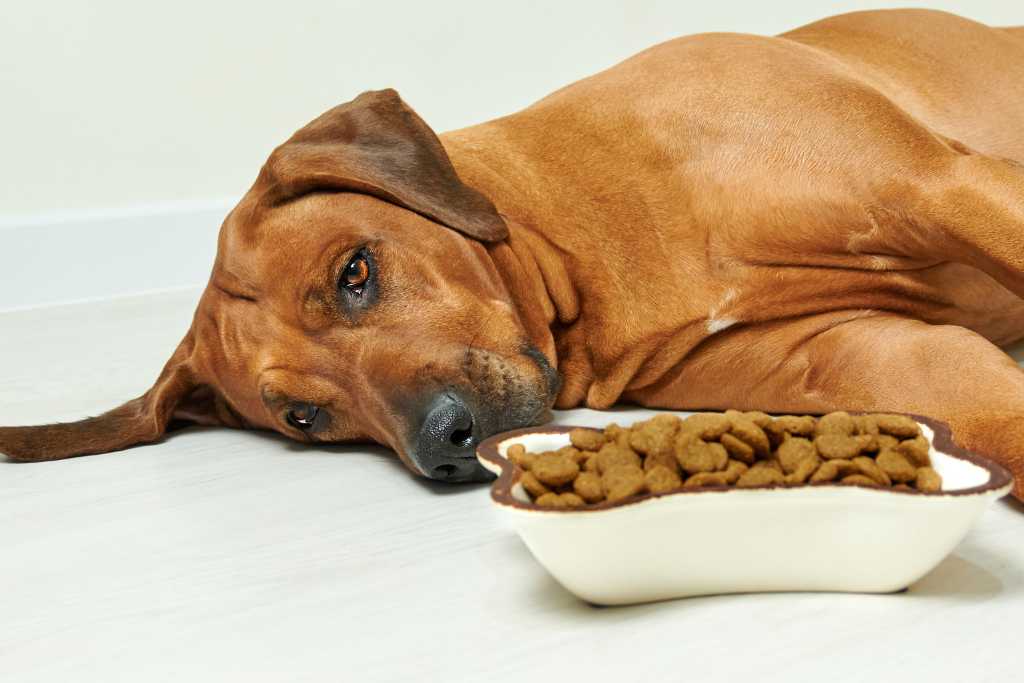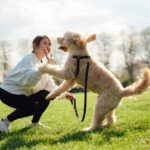If you’ve ever watched your beloved canine companion turn their nose up at their food bowl, you know how concerning and frustrating it can be. The excitement that usually comes with mealtime can quickly transform into worry, as we ponder the reasons behind their sudden disinterest. A dog that won’t eat can be a sign of various underlying issues, ranging from simple pickiness to potential health concerns.
In this article, we’ll explore the common causes of this behavior and provide practical solutions to help you get your furry friend back to being a happy eater. Whether it’s adjusting their diet, enhancing the mealtime experience, or understanding their unique preferences, we’re here to guide you in nurturing your pup’s appetite with love and care. Let’s dive in!
Table of Contents
- Understanding the Reasons Behind Your Dogs Disinterest in Food
- Identifying Food Preferences and Allergies for Better Eating Habits
- Practical Tips to Encourage Your Dogs Appetite and Enjoyment of Meals
- Creating a Positive Mealtime Environment for Your Furry Friend
- Q&A
- In Conclusion
Understanding the Reasons Behind Your Dogs Disinterest in Food
When your furry friend suddenly turns its nose up at food, it can be puzzling and concerning. Various factors might influence your dog’s appetite, ranging from health issues to environmental changes. Health-related issues, such as dental problems, gastrointestinal discomfort, or systemic illnesses, can make eating painful or unappealing. If you notice a drastic change in their eating habits, a trip to the vet is essential to rule out underlying health concerns. Additionally, consider their emotional and psychological state. Stress from changes in their surroundings, such as moving to a new home or the arrival of a new pet, can lead to a lack of interest in food. Consistency and comfort in their environment are vital for encouraging healthy eating habits.
Another significant factor could be the food itself. Dogs can be quite picky, and a shift in the formula or flavor can impact their enthusiasm for mealtime. Some common reasons include:
- Stale or spoiled food: Always check expiration dates and storage conditions.
- Texture or temperature: Some dogs prefer their food warm or with specific textures; consider experimenting with wet food or adding warm water to dry kibble.
- Overfeeding: If your dog is snacking too much between meals, they may not feel hungry come dinnertime. Adjusting treat portions can help.
By understanding these potential causes, you can take appropriate actions to ensure your dog returns to being a happy eater.
Identifying Food Preferences and Allergies for Better Eating Habits
Understanding your dog’s food preferences and potential allergies is crucial for promoting better eating habits. Every dog is unique, and factors such as breed, age, and health condition can influence their tastes and dietary needs. To identify their preferences, consider observing their eating habits over time. Note any patterns such as foods they enjoy or refuse. Additionally, consult with your veterinarian to learn about any potential allergies your dog might have, which could manifest as digestive issues or skin irritations. Familiarizing yourself with common food allergies in dogs is important. These may include:
- Beef
- Dairy
- Chicken
- Wheat
- Eggs
Once you have identified your dog’s preferences and any potential allergies, you can adapt their diet accordingly. Choosing high-quality, one-ingredient foods can alleviate allergy symptoms while keeping your furry friend satisfied. Introduce new foods gradually, allowing your dog to adjust to the changes without gastrointestinal upset. Additionally, maintaining a food diary can be beneficial in tracking what your dog eats and how they react to different meals. This information can prove invaluable when making future dietary decisions. Below is a simple table to help summarize your dog’s food preferences and allergy reactions:
| Food Type | Preference (Like/Dislike) | Allergy Reaction (Yes/No) |
|---|---|---|
| Beef | Like | No |
| Chicken | Dislike | Yes |
| Fish | Like | No |
| Vegetables | Like | No |
Practical Tips to Encourage Your Dogs Appetite and Enjoyment of Meals
Encouraging your dog to enjoy their meals can be a delightful challenge that enhances both their appetite and mealtime experience. One effective approach is to vary their diet. Dogs can be picky eaters, and introducing different flavors and textures can make mealtime exciting. Consider rotating high-quality protein sources, such as chicken, beef, or fish, and mix in various fruits and vegetables that are safe for dogs. This variety not only stimulates their taste buds but also provides essential nutrients. Additionally, you might find that slightly warming their food enhances the aroma, making it more enticing.
Another tip is to make mealtime interactive. Instead of presenting their food in a bowl, try using a slow feeder or puzzle toy designed for dogs. This engages their natural instincts to hunt and forage, turning mealtime into a playful activity. Furthermore, creating a calm and positive eating environment is crucial. Minimize distractions and establish a routine, so your dog associates mealtime with comfort and security. You can also try incorporating positive reinforcement by rewarding your dog for eating, which can help reinforce the idea that mealtime is a happy occasion.
Creating a Positive Mealtime Environment for Your Furry Friend
Creating a welcoming atmosphere during mealtime can significantly impact your dog’s eating habits. Consider the following elements to enhance their dining experience:
- Calm Environment: Ensure that mealtime is free from distractions such as loud noises or sudden movements. A peaceful ambiance encourages your furry friend to feel safe and relaxed.
- Feeding Routine: Establishing a consistent schedule for meals helps your dog anticipate when it’s time to eat, reducing anxiety and promoting a healthy appetite.
- Designated Eating Space: Choose a specific area for feeding that is comfortable and familiar to your dog. Using their favorite mat or bowl can also make mealtime feel special.
It’s also beneficial to pay attention to the type of food and presentation. Dogs can be picky, and a few simple adjustments can make all the difference:
- Freshness Matters: Ensure their food is fresh and appealing. Stale or expired food can deter even the hungriest pups.
- Interactive Feeders: Consider using puzzle feeders or toys that dispense food. These can enhance their mealtime experience by providing mental stimulation.
- Temperature Preference: Some dogs prefer their food warm rather than cold. Gently warming their meal can elevate aroma and taste.
Q&A
Q1: Why might my dog suddenly refuse to eat their food?
A1: There are several reasons why your dog might not be eating. It could be due to health issues, such as dental problems, gastrointestinal upset, or more serious conditions. Stress or anxiety from changes in their environment or routine can also affect their appetite. Additionally, dogs can be picky eaters or may simply be bored with their food.
Q2: How can I tell if my dog’s lack of appetite is a medical issue?
A2: If your dog’s refusal to eat lasts more than 24 hours, or if you notice other symptoms like vomiting, diarrhea, lethargy, or changes in behavior, it’s essential to consult your veterinarian. They can help determine if there’s an underlying health problem that needs addressing
Q3: What should I do if my dog is not eating their food?
A3: Start by assessing the situation. Check if the food is fresh and has not expired. Try offering a different flavor or brand to see if they respond better. You can also warm the food slightly or mix in some low-sodium broth to make it more appealing. If the problem persists, consult your vet.
Q4: Can stress or anxiety affect my dog’s eating habits?
A4: Absolutely! Dogs can be sensitive to changes in their environment, such as moving to a new home, the arrival of a new pet, or even loud noises. If you suspect stress is the cause, try to create a calm feeding environment and maintain a consistent routine. Using calming aids like pheromone diffusers or anxiety wraps may also help.
Q5: Should I be concerned if my dog only eats human food?
A5: While it can be tempting to feed your dog table scraps, a balanced diet specifically formulated for dogs is crucial for their health. If your dog refuses to eat their kibble but is eager for human food, consider gradually transitioning them back to their dog food by mixing a small amount of human food with it, gradually increasing the dog food portion.
Q6: What are some long-term solutions to encourage my dog to eat?
A6: To encourage a happy eater, maintain a consistent feeding schedule and avoid leaving food out all day. Make mealtime positive with treats and praise. Regularly change their food or add healthy toppers to keep their meals interesting. Lastly, regular vet checkups can help catch any potential health issues early.
Q7: Can I use treats as a substitute if my dog won’t eat?
A7: Treats can be used as a temporary solution, but they shouldn’t replace your dog’s main meals. Over-relying on treats can lead to an unbalanced diet and obesity. Instead, use treats to motivate your dog to eat their regular food or as a reward for finishing their meal.
Q8: How can I make my dog’s food more appealing?
A8: Try adding a little low-sodium chicken or beef broth, mixing in wet food with their dry kibble, or offering cooked vegetables like carrots or green beans. You can also try food puzzles or interactive feeders to make mealtime more engaging.
By paying attention to your dog’s eating habits and making small adjustments, you can help ensure they are happy and healthy eaters! If concerns persist, don’t hesitate to reach out to your veterinarian for personalized advice.
In Conclusion
navigating the challenges of a dog that won’t eat can certainly be puzzling, but with a bit of patience and understanding, you can help your furry friend become a happy eater once again. Whether it’s exploring potential health issues, adjusting feeding routines, or introducing new and exciting flavors to their meals, the key is to ensure that mealtime is a positive experience for both you and your pet. Remember, every dog is unique; what works for one may not work for another. By being attentive to your dog’s preferences and needs, you can foster a lasting bond over shared meals and help them lead a healthy, happy life. If concerns persist, don’t hesitate to consult your veterinarian, as they can provide tailored advice and support. Here’s to joyful mealtimes with your beloved companion!
















